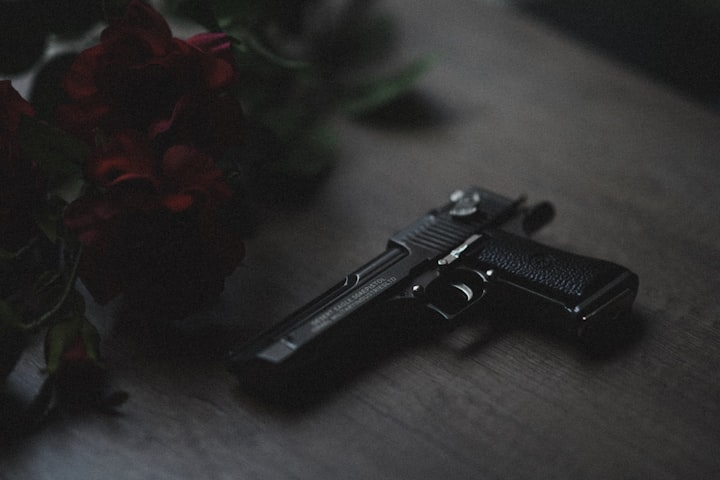There's a Gun on the Table
Did that change the dynamic of your story?
I heard some writing advice once about how to create a scene, tell a story, and raise the tension. I had just started the self-publishing of my first novel, The Wind, and I was completely out of my league in terms of how to polish my book. I paid for a package that included three phases of edits to tighten the grammar and pacing of the novel. My editor was thorough and kind, supporting me through each phase with helpful words and an easy grasp of what I needed to fix.
But the part that stuck with me was when he asked me to fix an entire scene near the beginning of my book. I remember our conversation on the phone with such clarity. This was back in 2008, so I'm not sure we would actually chat on the phone anymore, but we did back then, and it was fucking awesome!
My scene involved an aging hitman, sent to some backwater town in South America to kill a very bad man. But the scene my editor used to help me understand how to better build tension went a little something like this (and I'm paraphrasing):
Imagine a living room. There's a comfortable couch and a wooden coffee table. On the table there are magazines, and coasters, and a remote for the TV. There's a half-full glass of water and a pencil. On the couch sits an elderly couple. They are having a conversation about someone named Michael. They are both animated when they talk, as if something about Michael is causing some trouble in their lives. At one point in the conversation, the woman scowls at her husband, slaps him, and leaves the room. He sits in silence, looking solemnly at the coffee table. He grabs the pencil and the glass, sipping from the water and tucking the pencil behind his ear. And then he leaves the room.
Simple, right?
The scene is typical, and depending on how good the dialogue is, it may also be a bit boring for the reader.
Now imagine the same scenario, but...
...there's a gun on the table instead of a pencil. After the wife slaps her husband and leaves the room, what does he do? Maybe he takes a sip of water before grabbing the gun and blowing his brains out. Or does he grab the gun, check to see that it's loaded and follow his wife out of the room? Another option is how the gun is perceived before she leaves the room. Does she eye the weapon during their entire heated conversation about Michael? Is she thinking about the danger she's in, or maybe she hates her husband enough to kill him.
The entire point of this conversation was to raise my awareness as the author. To make me conscious at all times of how the audience may be feeling. Does every scene pop and sizzle with electricity? Because if it doesn't, then I need to put the metaphorical gun on the table. I need to ratchet up the tension. And this advice goes for every scene in your book. Whether it's dialogue at the kitchen table or an intense murder mystery.
I don't pretend to know the secret to great writing, but I do know that the advice I received that afternoon has stuck with me for the past 12 years. And I know I've grown as a writer. Not only because I write daily, but because I have heeded the advice of those who know better, and my audience has been rewarded with much better stories.
What have you learned from an editor or another writer? Do you heed the advice of family or friends that read your work? I'd love to hear your gun on the table stories, or any advice you can share. After all, writing is a community. Share your story.







Comments
There are no comments for this story
Be the first to respond and start the conversation.